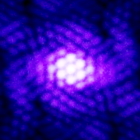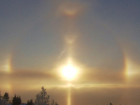|
Asteroids, meteors, and meteorites
|
|
| Watsisname | Date: Monday, 10.10.2016, 05:53 | Message # 256 |
 Galaxy Architect
Group: Global Moderators
 United States
United States
Messages: 2613
Status: Offline
| Quote steeljaw354 (  ) What would be the best asteroid to live on that doesn't orbit a planet? And isn't round?
128 Nemesis. Because who wouldn't want to live on an asteroid named Nemesis?
Quote spacer (  ) in few years i might want some too. how and from where you can buy meteorites pieces?
Oh gosh, there are tons of meteorite traders and sellers out there, and I've bought from several over the years. My most recent came from a dealer in Arizona who both buys from other collectors and travels to strewn fields to find new ones.
Just try looking around online.  Be sure to do your homework before you buy, though. Obviously try to make sure the seller is reputable. (You can eBay meteorites, but this can be dubious). You'll want to know what a particular meteorite looks like and how much they tend to sell for by weight, so that you don't get ripped off. You'll also want to know how to care for the meteorite. Meteorites contain elemental iron. Iron rusts. So you'll want to take steps to prevent further corrosion of your meteorite. This is especially true for polished slices of iron meteorites. With complete stones you can be less cautious. Be sure to do your homework before you buy, though. Obviously try to make sure the seller is reputable. (You can eBay meteorites, but this can be dubious). You'll want to know what a particular meteorite looks like and how much they tend to sell for by weight, so that you don't get ripped off. You'll also want to know how to care for the meteorite. Meteorites contain elemental iron. Iron rusts. So you'll want to take steps to prevent further corrosion of your meteorite. This is especially true for polished slices of iron meteorites. With complete stones you can be less cautious.
Finally, give thought to what kind of meteorite interests you. Most people think of meteorites as small, pitted lumps of dark metal. These are iron meteorites, which are less common falls, but easier to find. It's possible to get iron meteorite fragments for fairly cheap, and they make great show-pieces. But there are lots of other types of meteorites, too, which can look very different and have interesting things about them. 

|
| |
| |
| soapstermoavinis | Date: Friday, 14.10.2016, 17:04 | Message # 257 |
 Observer
Group: Users
 Pirate
Pirate
Messages: 18
Status: Offline
| Quote Watsisname (  ) nice! What did you get?
I got an 94 gram stone meteorite from Morocco.Pretty neat! 
Edited by soapstermoavinis - Friday, 14.10.2016, 17:06 |
| |
| |
| spacer | Date: Friday, 14.10.2016, 17:41 | Message # 258 |
 Star Engineer
Group: Users
 Israel
Israel
Messages: 1258
Status: Offline
| soapstermoavinis, cool! you got a picture?! 
"we began as wanderers, and we are wanderers still"
-carl sagan
-space engine photographer
|
| |
| |
| Watsisname | Date: Saturday, 15.10.2016, 05:03 | Message # 259 |
 Galaxy Architect
Group: Global Moderators
 United States
United States
Messages: 2613
Status: Offline
| Quote soapstermoavinis (  ) I got an 94 gram stone meteorite from Morocco.
Awesome! 94 grams is a good-sized piece.  That wouldn't be the Zag meteorite by any chance would it? That (and Monohans) are the only known meteorites with salt crystals in them! That wouldn't be the Zag meteorite by any chance would it? That (and Monohans) are the only known meteorites with salt crystals in them!

|
| |
| |
| soapstermoavinis | Date: Sunday, 16.10.2016, 13:51 | Message # 260 |
 Observer
Group: Users
 Pirate
Pirate
Messages: 18
Status: Offline
| Quote Watsisname (  ) That wouldn't be the Zag meteorite by any chance would it?
Actually it's an NWA meteorite
|
| |
| |
| midtskogen | Date: Tuesday, 06.12.2016, 05:11 | Message # 261 |
 Star Engineer
Group: Users
 Norway
Norway
Messages: 1674
Status: Offline
| I woke up this morning to find this recorded by my camera an hour ago:
Video
That will give me some extra work today...
NIL DIFFICILE VOLENTI

|
| |
| |
| Ostarisk | Date: Tuesday, 06.12.2016, 06:02 | Message # 262 |
 Pioneer
Group: Users
 Australia
Australia
Messages: 451
Status: Offline
| midtskogen, Nice!

My mods
|
| |
| |
| midtskogen | Date: Tuesday, 06.12.2016, 08:35 | Message # 263 |
 Star Engineer
Group: Users
 Norway
Norway
Messages: 1674
Status: Offline
| It seems certain that this fell over the ocean: Analysis
As seen from Oslo in the video, the distance was about 500 km and it was visible for an impressive 12 seconds. Unfortunately, the angles that I have make it a bit difficult to determine the exact track. Tiny adjustments (a tenth of a degree) can move the track tens of km, and the end of the luminous track could also be as low as 25 km, but it's hard to say. Recordings from different locations in southern Norway do not directly show the fireball, only a flashing overcast sky.
NIL DIFFICILE VOLENTI

|
| |
| |
| FastFourierTransform | Date: Tuesday, 06.12.2016, 10:18 | Message # 264 |
 Pioneer
Group: Local Moderators
 Spain
Spain
Messages: 542
Status: Offline
| Quotemidtskogen (  ) was visible for an impressive 12 seconds
What!!!?
This is amazing!!
What size should that rock have to display such majestic spectacle?
The orbit is an hyperbola! Does this rock came from interstellar space? if not it would be interesting to see what kind of gravity assists happened to it in the last years
|
| |
| |
| midtskogen | Date: Tuesday, 06.12.2016, 11:10 | Message # 265 |
 Star Engineer
Group: Users
 Norway
Norway
Messages: 1674
Status: Offline
| The size is hard to estimate, because the track and speed are uncertain. My order of magnitude guess would be 100 kg initial mass.
The current pre-entry speed estimate is 20 km/s. That places it firmly in our solar system. Interstellar objects would travel faster than ~73 km/s and would be a quick and violent event. Interstellar (or even intergalactic) particles do hit Earth, but anything larger than milligram sized particles is likely extremely rare.
The orange colour is likely a result of the atmosphere, like when the sun sets. It's true colour seems to have been green, but up close it would likely have been mostly perceived as blindingly bright. The brightness may have been about -17 (normalised to 100 km distance).
EDIT: I might increase the mass estimate an order of magnitude based on observations from western Norway. This is a big event.
EDIT 2: In the news including a video from western Norway. I have received the original video and will try to calibrate tonight.
EDIT 3: Video from Bergen calibrated and taken into account. This makes the entry speed somewhat lower, 16.3 km/s, and the luminous track ends at 23.5 km. Also, the recorded luminous period becomes 14 seconds, but since the beginning was recorded 600 km away, I suspect that it would remain visible for at least 15 seconds if observed directly below. I'm increasing the mass estimate by an order of magnitude, to 1000 kg, but this is still a wild guess.
NIL DIFFICILE VOLENTI

Edited by midtskogen - Tuesday, 06.12.2016, 22:27 |
| |
| |
| Watsisname | Date: Wednesday, 07.12.2016, 05:54 | Message # 266 |
 Galaxy Architect
Group: Global Moderators
 United States
United States
Messages: 2613
Status: Offline
| Very impressive! Shame it didn't quite make it to land -- to have dropped recoverable stones would have been exciting.
The long duration is also more to do with the slow speed and shallow entry angle than its size, though it of course must be big enough to penetrate that deep into the atmosphere.
As a very crude first estimate (ignoring spherical shape of Earth and acceleration of the meteor), you can calculate the time of the luminous track to be t=h/(vsinθ) where h is the thickness of atmosphere from top to bottom of track, v is the velocity and θ is the entry angle. For this meteor, visible from about 85(?)km to 23.5km, entering at 18 degrees and 16.3km/s, that predicts a visibility time of 12.2 seconds. This is an underestimate since the meteor does slow down, but it's actually pretty close to what is observed.

|
| |
| |
| midtskogen | Date: Wednesday, 07.12.2016, 06:21 | Message # 267 |
 Star Engineer
Group: Users
 Norway
Norway
Messages: 1674
Status: Offline
| Yes, it significantly slows down. The frame rate of the Bergen video is low, so it's a bit difficult to match the flashes, but my latest attempt gives me just over 15 seconds of recorded video. No reports of rocks appearing on oil platforms. 
EDIT: Tiny adjustments to the calibrations, less than a tenth of a degree, will reduce the entry speed even more and trace the origin to the asteroid belt, which may be more plausible. A tenth of a degree is within the uncertainty range.
To days earlier, a similar sized, of not larger, meteor swept across Siberia:
NIL DIFFICILE VOLENTI

Edited by midtskogen - Wednesday, 07.12.2016, 07:42 |
| |
| |
| soapstermoavinis | Date: Saturday, 31.12.2016, 15:57 | Message # 268 |
 Observer
Group: Users
 Pirate
Pirate
Messages: 18
Status: Offline
| Wow that must have been maybe even 10 meters across 
|
| |
| |